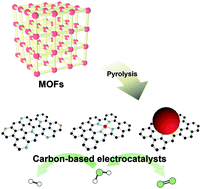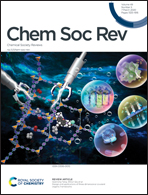MOF-derived electrocatalysts for oxygen reduction, oxygen evolution and hydrogen evolution reactions
Abstract
Oxygen reduction reaction (ORR), oxygen evolution reaction (OER) and hydrogen evolution reaction (HER) are three key reactions for the development of green and sustainable energy systems. Efficient electrocatalysts for these reactions are highly desired to lower their overpotentials and promote practical applications of related energy devices. Metal–organic frameworks (MOFs) have recently emerged as precursors to fabricate carbon-based electrocatalysts with high electrical conductivity and uniformly distributed active sites. In this review, the current progress of MOF-derived carbon-based materials for ORR/OER/HER electrocatalysis is presented. Materials design strategies of MOF-derived carbon-based materials are firstly summarized to show the rich possibilities of the morphology and composition of MOF-derived carbon-based materials. A wide range of applications based on these materials for ORR, OER, HER and multifunctional electrocatalysis are discussed, with an emphasis on the required features of MOF-derived carbon-based materials for the electrocatalysis of corresponding reactions. Finally, perspectives on the development of MOF-derived carbon-based materials for ORR, OER and HER electrocatalysis are provided.

- This article is part of the themed collection: Electrochemistry in Energy Storage and Conversion


 Please wait while we load your content...
Please wait while we load your content...